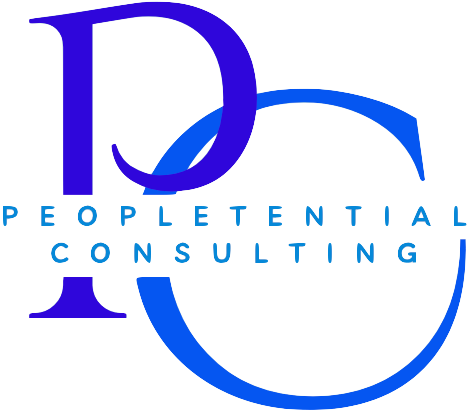BLOG
STAY UP TO DATE

January 31, 2025
In an era where AI can craft the perfect email, analyse vast amounts of data in seconds, and even suggest what we should eat for dinner (based on our search history and suspiciously accurate targeted ads), what truly sets humans apart? According to Adam Grant’s Hidden Potential, the answer isn’t raw intelligence or technical expertise, it’s character. And not the kind of character that’s fixed and immutable but one that can be actively built through practice. What are the key character skills that unlock potential in this new landscape? Intentional discomfort (seeking out challenges instead of avoiding them) Absorbing information & adapting (being open to new ideas and flexible in execution) Embracing imperfection (letting go of perfectionism in favour of progress) Surprisingly, these aren’t the “fancy” skills that land you a viral LinkedIn post or get a standing ovation in a job interview. No one’s throwing you a parade for embracing discomfort. Yet, in a world where AI is automating the predictable, these HUMAN skills are becoming our greatest advantage. Perfectionism vs. Progress: Why Embracing Imperfection Wins Ever worked with a leader so fixated on being perfect that they refused to make decisions until they had all the information, all the supporting evidence, and a 57-slide deck to back it up? Well, that moment rarely arrives…. The hard truth? There is no such thing as having all the answers. Additionally, what’s the real return on sweating that last 20%? Often, the extra effort delivers diminishing returns, wasting time, slowing teams down, and killing momentum. Meanwhile, leaders who embrace imperfection make faster decisions with sufficient information, build trust with their teams, and (ironically) get better results. Character Skills: The Real Competitive Edge The best part about character skills? They’re not static. You don’t have to be born with them, and you certainly don’t need a certification. They’re built through repetition, much like flexing a muscle. Every time you step into discomfort, adapt to a curveball, or laugh off a mistake instead of spiralling into self-doubt, you’re strengthening these skills. Leadership in the AI Age: What Will You Build? When I reflect on the great leaders I’ve worked with, or my own leadership journey, it’s clear that these “soft” skills ARE the hardest to master but the most valuable. AI will continue to evolve, but it won’t replace human resilience, adaptability, and emotional intelligence. So, in a world hyper-focused on hard skills, how can you create space for yourself and your team to grow these overlooked character goldmines? Which character skill are you working on right now?

January 31, 2025
A few years ago, I worked with an executive peer who was the definition of sharp and strategic, destined for the top. But there was one small (okay, big) problem - her leadership style was about as warm as a spreadsheet on a Monday morning. She was the ultimate transactional leader, engaging only when she needed something or to redirect blame. If you’ve ever felt one step away from being thrown under the bus by a colleague or boss, you know exactly what I mean. She managed relationships like a to-do list: assign task, shift responsibility, move on, with a clear pecking order based on revenue contribution. Looking good took precedence over doing good. Fast forward to today, she’s now a CEO. Unfortunately, her reputation hasn’t evolved, and neither has her leadership style. And here’s the thing. Transactional leadership does work... but only for a while. It delivers short-term results, sure, but at what cost? What Your Team is Actually Thinking If you’re leading transactionally, your team probably won’t tell you outright (because they’re too busy updating their CVs), but here’s what’s going through their minds: “You only call me when you need something.” “Why should I go above and beyond when you wouldn’t notice anyway?” “Am I a human, or just a KPI to you?” Ouch. It’s 2025: Time to Lead with Heart 💛 Transactional leadership keeps the lights on, but it won’t light anyone’s fire. If you want an engaged, innovative team that sticks around (and doesn’t fantasize about muting you on Slack), it’s time to embrace Heartfelt Leadership . 1. BE REAL – Drop the ‘perfect leader’ act Nobody expects you to have all the answers. Show vulnerability, admit mistakes, and be human. Trust me, your team will respect you more for it. Leadership is not about maintaining a facade of infallibility but about fostering trust through authenticity. 2. EMPOWER YOUR TEAM – Step away from the micromanaging Want creativity and innovation? Give people autonomy. Trust them to make decisions and watch engagement soar. Studies show that employees who feel trusted and empowered are significantly more productive and satisfied in their roles. Instead of focusing on minute control, concentrate on setting clear goals and providing the necessary support. 3. CONNECT – Care about people as much as you care about numbers A genuine, no-agenda “How’s life?” can do wonders. People work harder for leaders who see them as more than just productivity units. In an era where workplace well-being is becoming a priority, leaders must cultivate empathy. Simple gestures, such as remembering an employee’s birthday or recognizing personal achievements, can foster loyalty and commitment. 4. LOOK IN THE MIRROR – What’s your real intention? Before you speak or act, ask yourself: “Who is this serving?” If the answer is only you, rethink it. The best leaders build success with their teams, not at their expense. Self-reflection is crucial; regularly assess whether your leadership style aligns with the values and culture you want to create. The ROI of Leading with Heart I’ve coached leaders who’ve made this shift, and the results are undeniable: Stronger relationships with colleagues and teams Higher levels of engagement and innovation Influence that grows organically—not because it’s demanded, but because it’s nurtured. The ripple effect of heartfelt leadership extends beyond workplace productivity. When leaders inspire trust and loyalty, they create an environment where employees feel psychologically safe to take risks, collaborate, and think outside the box. The best teams are not built on fear but on mutual respect and a shared sense of purpose. Making the Shift If you’re looking to transition from transactional to transformational leadership, start with small, intentional changes: Schedule regular one-on-one check-ins where the focus is on development, not just deadlines. Recognize and celebrate contributions—publicly and privately. Seek feedback from your team and act on it. Foster an open-door policy where employees feel safe to share concerns and ideas. Final Thoughts So, what will it be in 2025? More task lists and transactions or real relationships and lasting impact? Your team can tell the difference. Can you? The best leaders don’t just manage people—they inspire them. They understand that true leadership is about connection, trust, and the courage to lead with heart. If you’re ready to build leadership advantage through executive coaching and step into 2025 as a leader who genuinely makes a difference, let’s talk.
©2025 Peopletential Consulting. ABN 48 103 549 803
DESIGNED by
QuickFire Sites
